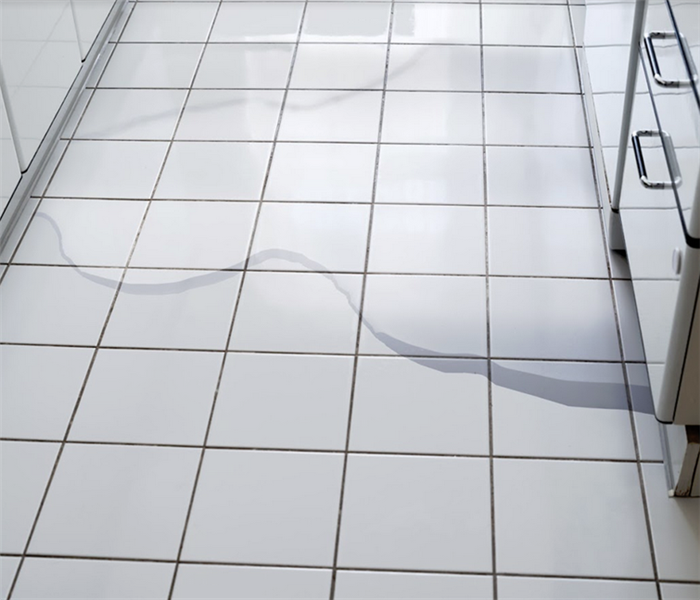Can Water Problems in Marysville Affect the Value of Your Home?
5/31/2020 (Permalink)
 Dealing with water damage right away is critical for a successful result. Contact our expert team for services.
Dealing with water damage right away is critical for a successful result. Contact our expert team for services.
Untreated Water Issues can have a Direct Impact on the Value of your Home, Particularly if they Affect Structure or Create Mold. Address Water Issues by Using Water Cleanup Services in Marysville Today.
How does water damage affect the structure of my Marysville home?
Water can cause damages to natural structural materials without early intervention water cleanup in your Marysville home. When natural materials have exposure to water, they can expand due to water absorption. If your home structure expands, it can put unnecessary pressure onto jointing, which frequently manifests as pressure cracks, which you find near spots of long-term water damage. While wet, these same natural materials can attract microbial bacteria, viruses, and mold. Without early intervention, a relatively benign water incident can lead to extensive dry rot or mold infestation. Using a professional restorer can help to identify pressure points or areas of concern in a wet home. Identifying areas of concern early is essential to controlling losses both now and in the future.
Who provides cleanup for water-related emergencies?
Professional restoration services in Marysville are available for a range of home emergencies, including water. These firms hold qualifications from the Institute of Cleaning, Restoration and Certification (IICRC) body which prove that they have the requisite skillset to dry your home correctly. SERVPRO water restoration technicians (WRT) complete hundreds of hours worth of industry training programs before getting first-hand experience working within the commercial and residential community. Using a qualified restorer is the surest way to avoid the painful and expensive secondary harms which occur from amateur restoration.
What do water restorers do?
- Scope the property for potential harm, hazards and trace water issues using advanced water measuring equipment like thermal imaging cameras, sensors and probes
- Protect and restore contents that have exposure to moisture
- Dry and clean the affected structure including structural cavity inspection
- Thoroughly deodorize the areas of damage or the property altogether using ultra-low volume (ULV) fogging equipment
- Apply antimicrobial treatments to guard against future damages like mold growth
Does wet drywall need replacement?
Wet drywall can become permanently harmed by exposure to large amounts of water, losing its structure and weakening. Equally, long-term exposure to moisture drywall can absorb it, leading to microbial growth or contamination. Typically, drywall needs to be replaced in situations where water exposure lasts longer than seventy-two hours. However, in many cases, drywall is resilient enough to withstand water and be restorable to their safe, original condition. These conditions for drywall may be void, if contamination levels in the water are high, in which case it is essential to remove both contaminated water and drywall altogether.
How do you restore the wet drywall?
- Use a moisture probe beneath the baseboard or a moisture sensor to assess the extent of water damage
- Use Borescopes to assess whether water has migrated into the wall cavity
- Apply rapid, heated air to the exterior wall to encourage evaporation and measure until the moisture content returns to a normal level
- If there is water migration into the cavity, use injectidry systems or remove a section of drywall to allow ventilation into the cavity.
- Dehumidify the affected area to evaporate residual moisture
How do you remove the wet drywall?
To replace the wet section of your walls, you need first to remove the existing drywall. Prepare the wall by switching off the power and scanning the wall for any obstacles behind it, like electrical cables or metal rods. Remove fixtures from the wall, including lightswitch fittings and baseboards. Depending on the extent of damage, SERVPRO technicians can remove either the entire drywall or a small section two feet above the watermark. Using clawhammer can help to prise away full sheets from the wall. Alternatively, we can remove a smaller section by cutting holes around the drywall section and removing it. Bag up pieces of the wet drywall in double seal bags to prevent spreading water and dust throughout the home.
Is the reinstallation of drywall included within restoration services?
Most materials that are removed or non-salvageable are included as replacement costs, which can be passed on to an insurance adjuster. It is essential to identify and remove non-salvageable areas with building materials like drywall to stop secondary damages. However, SERVPRO technicians do work with a restore rather than replace mentality when performing restoration to keep expenses and inconvenience for the homeowner to a minimum. If drywall is removed, our technicians can reinstall it professionally as well as apply an antimicrobial primer to the wall. The primer not only gives you an even finish when repainting but can also stave off potential microbes like mold.
To get your home back to a preloss condition and minimize potential value loss, contact SERVPRO of Marysville / Arlington at (360) 658-0506.






 24/7 Emergency Service
24/7 Emergency Service